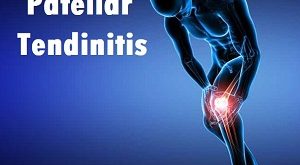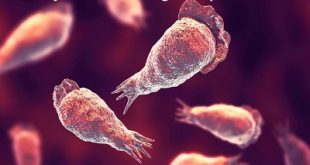Definition
Precocious puberty is the term for puberty that begins much earlier than usual. Puberty is the process in which a child has a growth spurt and develops the sexual physical features of an adult. In the brain, the hypothalamus releases chemicals (hormones) that cause the pituitary gland to release hormones called gonadotropins. Gonadotropins stimulate the growth of the sex glands (also called gonads), which in boys are the testicles, and in girls are the ovaries.
In boys, the testicles release testosterone; in girls, the ovaries release estrogen. Puberty usually starts between the ages of 8 and 13 in girls and 9 and 14 in boys. Children affected by precocious puberty undergo this process much earlier: girls develop secondary sexual characteristics, like breasts, before age 8, and boys with precocious puberty have changed before age 9.
Precocious puberty
Epidemiology
Precocious puberty is commonly characterized as the development of secondary sex characteristics in girls before age 8 (or menarche before age 9), and in boys before age 9. The overall incidence of precocious sex is estimated to be between 1:5,000 and 1:10,000 babies. The ratio of females to males is approximately 10:1.
Types of Precocious puberty
There are 2 types of early puberty:
Gonadotropin-dependent: Also known as central precocious puberty, this is the most common type in both boys and girls. It’s caused by the early release of sex hormones (called gonadotropins) by the pituitary gland at the base of the brain. These hormones regulate puberty and sexual function.
Gonadotropin-independent: This is a type of early puberty that is not caused by the release of gonadotropins.
Precocious puberty Risk factors
Precocious puberty is more common in girls than in boys and occurs more often in African-Americans than in children of other races. Other risk factors may include:
- Certain medical conditions (e.g., McCune-Albright syndrome, congenital adrenal hyperplasia)
- Exposure to estrogen or testosterone hormones (e.g., pills, ointments)
- Obesity
- Previous radiation to the brain or spinal cord
The changes to your child’s body brought on by precocious puberty may cause him (or her) to feel self-conscious, and may also lead to teasing by peers. Counseling may help your child to work through these issues.
Tanner stages of development
Causes of Precocious puberty
Usually, early puberty has no identifiable cause. It happens earlier in certain ethnic groups such as Afro-Caribbean and South Asian.
Being overweight or obese can contribute to early physical maturation. In rare instances, precocious puberty may be due to other conditions. For example:
- A structural anomaly in the brain (such as an abnormal growth or mass)
- Brain injury due to head trauma
- An infection (such as meningitis or encephalitis)
- A problem in the ovaries, testes, adrenal gland or thyroid gland
- A genetic disease affecting endocrine organs, bones and skin
Girls usually have no underlying medical problem; they simply start puberty early for unknown reasons. In boys, early puberty is less common and more likely to be associated with an underlying medical problem. Talk to your child’s doctor if sexual development is happening too soon.
Symptoms
The signs are secondary sexual characteristics that happen early.
Common signs in girls can include:
- Breast growth
- Pubic and underarm hair
- Menstruation
- Ovulation
Common signs in boys can include:
- Enlarging penis and testicles
- Pubic and underarm hair
- Facial hair
- Spontaneous erections
- Production of sperm
- Acne
- Deepening of the voice
Other signs of the disorder include:
- Moodiness
- Increased aggression
- Growing taller earlier than other classmates
The signs of precocious puberty can be like other health conditions. Make sure your child sees his or her healthcare provider for a diagnosis.
Facial hair growth
Complications
- Psychological difficulties, including feeling, stressed, and becoming withdrawn because of the early physical changes. Poor self-esteem and bullying may be issues.
- Behavioral problems and emotional problems.
- Early puberty accelerates growth but bone maturation is also accelerated and so adult height is reduced.
Diagnosis and test
Our specialists in pediatric and adolescent gynecology start with a full health history and then perform a comprehensive physical exam. We may also order the following blood tests may be ordered to measure hormone levels including:
- Luteinizing hormone (LH)
- Follicle stimulation hormone (FSH)
- A form of estrogen called estradiol
- Thyroid hormones
- Adrenal gland hormones
The following diagnostic tests may also help in diagnosis:
X-ray: The procedure uses a small amount of radiation in order to produce images of tissues inside the body. To measure your child’s bone age, an X-ray can be taken from the left hand and wrist. Bone age is sometimes, with precocious puberty, older than calendar age.
Ultrasound (sonography): This imaging test uses sound waves and a computer to create pictures of blood vessels, tissues, and organs. It helps physicians evaluate the uterus and ovaries.
Magnetic Resonance Imaging (MRI): This test uses large magnets and a computer to make detailed images of tissues in the body.
Precocious puberty treatment
If your child has precocious puberty, the doctor may refer you to a pediatric endocrinologist (a doctor who specializes in growth and hormonal disorders in children) for treatment.
The treatment goals are to:
- Stop or even reverse sexual development
- Stop the rapid growth and bone maturation that can lead to adult short stature or an early start to periods
Depending upon the cause, there are two possible approaches to treatment:
- Treating the underlying cause or disease
- Lowering the high levels of sex hormones with medicine to stop sexual development
Sometimes, treatment of a related health problem can stop the precocious puberty. But in most cases, there’s no other disease, so treatment usually involves hormone therapy to stop sexual development.
The currently approved hormone treatment is with drugs called LHRH analogs. These synthetic (man-made) hormones block the body’s production of the sex hormones that cause early puberty. Positive results usually are seen within a year of starting treatment. LHRH analogs are generally safe and usually cause no side effects in kids.
In girls, breast size may decrease. In boys, the penis and testicles may shrink back to the size expected for their age. Growth in height will also slow down to a rate expected for kids before puberty. A child’s behavior usually becomes more age-appropriate too.
Prevention of Precocious puberty
- Much of the risk of precocious puberty is associated with gender, race, and family history, as well as other causes that are largely unavoidable, so you’re limited in what you can do to prevent this condition.
- Keeping your child’s weight in a healthy range may help lower their risk of precocious puberty and other conditions associated with obesity and being overweight, such as type 2 diabetes.
- You should also avoid giving your child prescription hormone medications, dietary supplements, or other products that may contain estrogen or testosterone unless prescribed or recommended by their doctor.
 Diseases Treatments Dictionary This is complete solution to read all diseases treatments Which covers Prevention, Causes, Symptoms, Medical Terms, Drugs, Prescription, Natural Remedies with cures and Treatments. Most of the common diseases were listed in names, split with categories.
Diseases Treatments Dictionary This is complete solution to read all diseases treatments Which covers Prevention, Causes, Symptoms, Medical Terms, Drugs, Prescription, Natural Remedies with cures and Treatments. Most of the common diseases were listed in names, split with categories.







